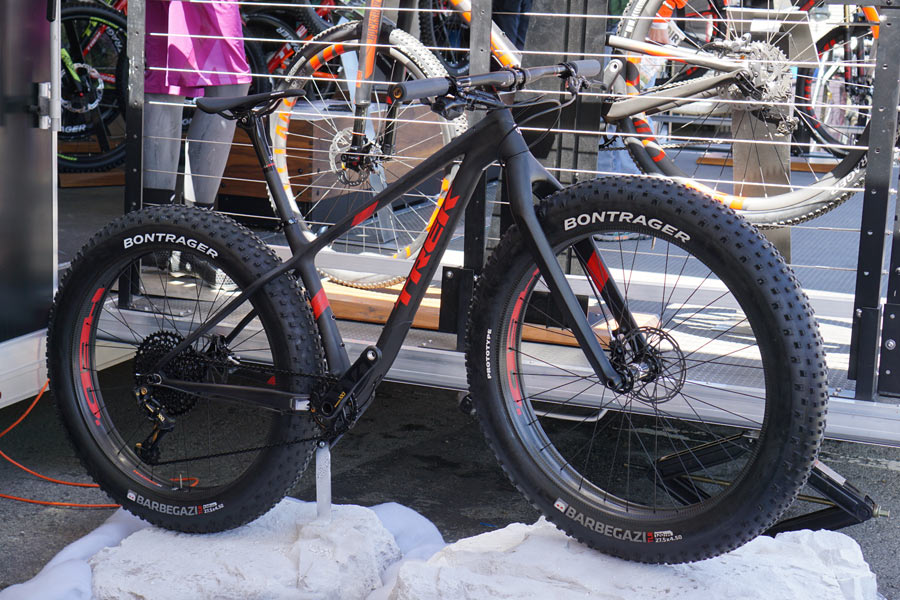Review on Fat Bikes
So what was a niche underground product has sprung forward into the main stream with quite a few big bike brands introducing them into their line ups.
Quite a lot of people ask "what is the point of a fat bike?"
Well wikipedia will define it as this.
"A fatbike is an off-road bicycle with oversized tires, typically 3.8 in (97 mm) or larger and rims 2.6 in (66 mm) or wider, designed for low ground pressure to allow riding on soft unstable terrain, such as snow, sand, bogs and mud. Fatbikes are built around frames with wide forks and stays to accommodate the wide rims required to fit these tires. The wide tires can be used with inflation pressures as low as 5 psi (340 hPa) to allow for a smooth ride over rough obstacles. A rating of 8–10 psi (550–690 hPa) is suitable for the majority of riders."
While the origin of fat bikes is widely debated, with deep ties to Alaska and the desert Southwest, it’s in the Minneapolis suburbs, home to bike makers Salsa, Surly, where this particular design has grown from an obscure novelty to mountain biking’s newest big thing.
The fattie phenomenon might well have stayed confined to the winter were it not for the efforts, about a decade ago, of Dave Gray, a designer at Surly and a self-described garage tinkerer. In 2005, Gray produced the Pugsley, a squat machine painted purple and kitted with bulbous four-inch tires—the first mass-produced fat bike.
This bike was a big Game changer although looking a bit odd with its off centre rear end and forks to accomodate the 135mm spacing front and rear. I remember the first time we had a Pugsleys frame come in to be built up it looked like it had been involved in a fight with two hgv's.
As more and more products have become available for fat bikes so have the standards changed. Rear hub spacing is generally 170 or 190mm and front spacing is 142mm. This allows normal dishing of the wheel and a stronger wheel build.
Suspension forks are becoming more popular to with Rock Shox Bluto a firm Favourite, Lauff have their carbon leaf sprung fork. You also have the stange people that want to be slightly different and have adapted Cannondale's lefty fork for fat bike use.
Tyre choice is also becoming more mainstream with most popular manufacturers producing multiple tread patterns at decent peices,(early fat bike tyres would set you back £80 +).
Whilst inveted as a necessity to ride the usually unrideable conditions of snow and sand. Fatbikes are capable of traversing diverse terrain types including snow, sand, desert, bogs, mud, pavement, becoming more prominent on mountain bike trails due to the extra grip from the widere tyres them can actually climb better than most full suspension bikes.
They are a bit like marmite. You love them or hate them. You get it or you don't. I for one am a convert.
Viva La Fa
Dave
If you`re looking for Fat bikes, check out our range of fat bikes at Formby Cycles. Happy cycling





